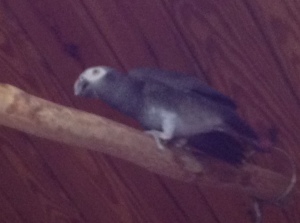
Folks, I must say that this news breaks my heart a bit. David Leffler reports for the Washington Post on a study showing high suicide rates among veterinarians:
Pushed to the brink by mounting debt, compassion fatigue and social media attacks from angry pet owners, veterinarians are committing suicide at rates higher than the general population, often killing themselves with drugs meant for their patients.
…On Jan. 1, the Centers for Disease Control and Prevention released the first study to ever examine veterinarian mortality rates in America. The results were grim: Between 1979 and 2015, male and female veterinarians committed suicide between 2 to 3.5 times more often than the national average, respectively.
These findings not only reflect a higher suicide rate among all veterinarians but also suggest that women in the field are more likely to take their own lives, which starkly contrasts trends within the general population.
Considering the profession is becoming increasingly female-dominated (more than 60 percent of U.S. veterinarians and 80 percent of veterinary students are now female), the study’s authors suggested this trend could foreshadow even more veterinarian suicides in the years to come.
Here’s more from the piece:
- “(T)he average veterinary student now graduates with $143,000 or more in debt”
- “Veterinary salaries — which start at about $67,000 a year — aren’t keeping pace with rising tuition rates”
- “Veterinarians are consistently asked to act as animal undertakers” by putting sick animals to sleep, resulting in “ethical conflict and moral distress”
- Veterinarians often have “little reprieve from a high-stress work environment that seldom provides an opportunity to take a break, eat lunch or go to the bathroom”
I have nothing but admiration for those who tend to sick and injured animals. I think of it as noble and compassionate work, “God’s work,” if you will. This evidence that the costs of a veterinary education and working conditions in the field are contributing to an elevated suicide rate saddens me greatly.
Fortunately, as the article notes, the veterinary field is taking notice. Among other things, the American Veterinary Medical Association is engaging in wellness education programs and practitioner support groups are popping up on social media.
And perhaps there’s more that the rest of us can do as well. Taking a beloved animal to the vet is a stressful experience all around, and the animals aren’t in a position to show much gratitude for having their health care needs addressed. But if you find yourself in this position, please let the veterinarians and staff members know how much their work is appreciated. It could make a big difference to them.
***
Here in the U.S., the National Suicide Prevention Lifeline is staffed 24 hours a day: Call 1-800-273-8255. For more about suicide prevention, go to the National Suicide Prevention Lifeline site.



